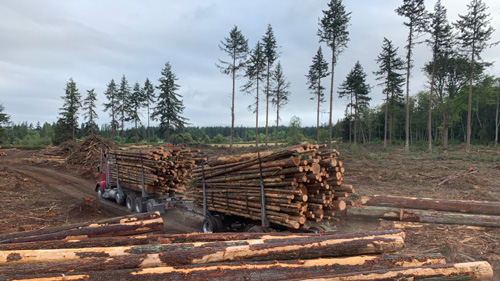Commercial Thinning


Forest thinning can be fantastic for the endurance and health of your forest land. We can remove everything from diseased trees to overcrowding while keeping you forest healthy. Also referred to as species retention, we are keen to help you retain the desired species while safely clearing the other timber.
Why Thin?
Thinning ranks as one of the most powerful forest management tools available to landowners for achieving a wide range of objectives. Thinning improves tree growth rates, economic potential, species composition, disease and insect resistance, quality of wildlife habitat, forage production and visual appearance of tree stands. This forest management tool also increases a forest’s ability to withstand wildfire.
Thinning is removing selected trees from a stand to allow others to increase growth. As trees in a stand grow, they eventually occupy all the growing space, crowd out lower growing plants, and compete with each other. Unless some of the trees die or are removed, others cannot continue to grow. Thinning removes smaller trees before growth slows and keeps crop trees growing rapidly.
Thinning systems vary with respect to timing, strategy and intensity. The present condition of your stand, your management objectives and constraints, your skill level and the amount of time you can devote to the administration of your stands are all vital factors in determining the best thinning system for you. Whatever you do, don’t delay. Particularly with pre-commercial thinning, it’s best to start early.
How To Thin:
- Determine what the objectives of the thinning are and walk through property to identify desired species.
- Collect stand information—Try to determine actual trees per acre versus desired trees per acre, species, and grade.
- Define leave-tree characteristics. Consider size, health, form, crown ratio and species. Quality of leave trees is extremely vital because it governs what log values will be in the future.
- Choose leave-tree spacing. As an example: a common rule of thumb for thinning Douglas-fir is the D+4 rule. The distance between leave trees is roughly the same digit in feet as the diameter of your leave trees plus 4 inches. (8 inch diameter + 4 = 12 foot spacing)
Consider how you would like the slash disposed. Slash is the residue left after thinning. Problems from PCT slash include fire hazards and animal and wildlife barriers. Benefits include nutrient release and tiny animal habitat. Options include pile and burn, prescribed burn, lop and scatter, slash-release buy and no treatment.
Available Locations: Washington Oregon Idaho Arizona California Colorado Hawaii Montana New Mexico Utah Wyoming
WE ARE ALWAYS LOOKING FOR NEW PROPERTIES
ARE YOU INTERESTED IN SELLING YOUR PROPERTY? SEND US YOUR INFORMATION AND WE WOULD LOVE TO TAKE A LOOK AT IT.
SERVICES
Land Acquisition
Timber Purchases
Traditional Logging
Commercial Thinning
Salvage Logging
View Clearing
Valuations & Appraisals
Additional Services
LINKS
About
Free Estimate
Locations
Services
PROPERTIES FOR SALE
Coming Soon – Dewatto – 5.04 acre
COMING SOON – Adna – 75.39 Acres
COMING SOON – Chehalis – 6.0 Acres
COMING SOON – Chehalis – 6.1 Acres
COMING SOON – Oak Harbor – 5.0 Acres
COMING SOON – Oil City – 16 Acres
COMING SOON – Port Orchard – 9.55 Acres
COMING SOON – Queets – 6.9 acres
COMING SOON – Roosevelt Beach – Multiple
COMING SOON – SHELTON – 29.62 Acres
SOLD – Arcadia – 6.81 acres
SOLD – Cannon Beach – 26.92 Acres
SOLD – Lakebay – 5.53 acre
SOLD – Oak Harbor – 12.7 acres
SOLD – Port Orchard – 9.65 acres
SOLD – SULTAN – 14.81 acres Equestrian Paradise
SOLD – Tahuya – 5.66 acres
CONTACT US
TOLL FREE: 866-306-8228